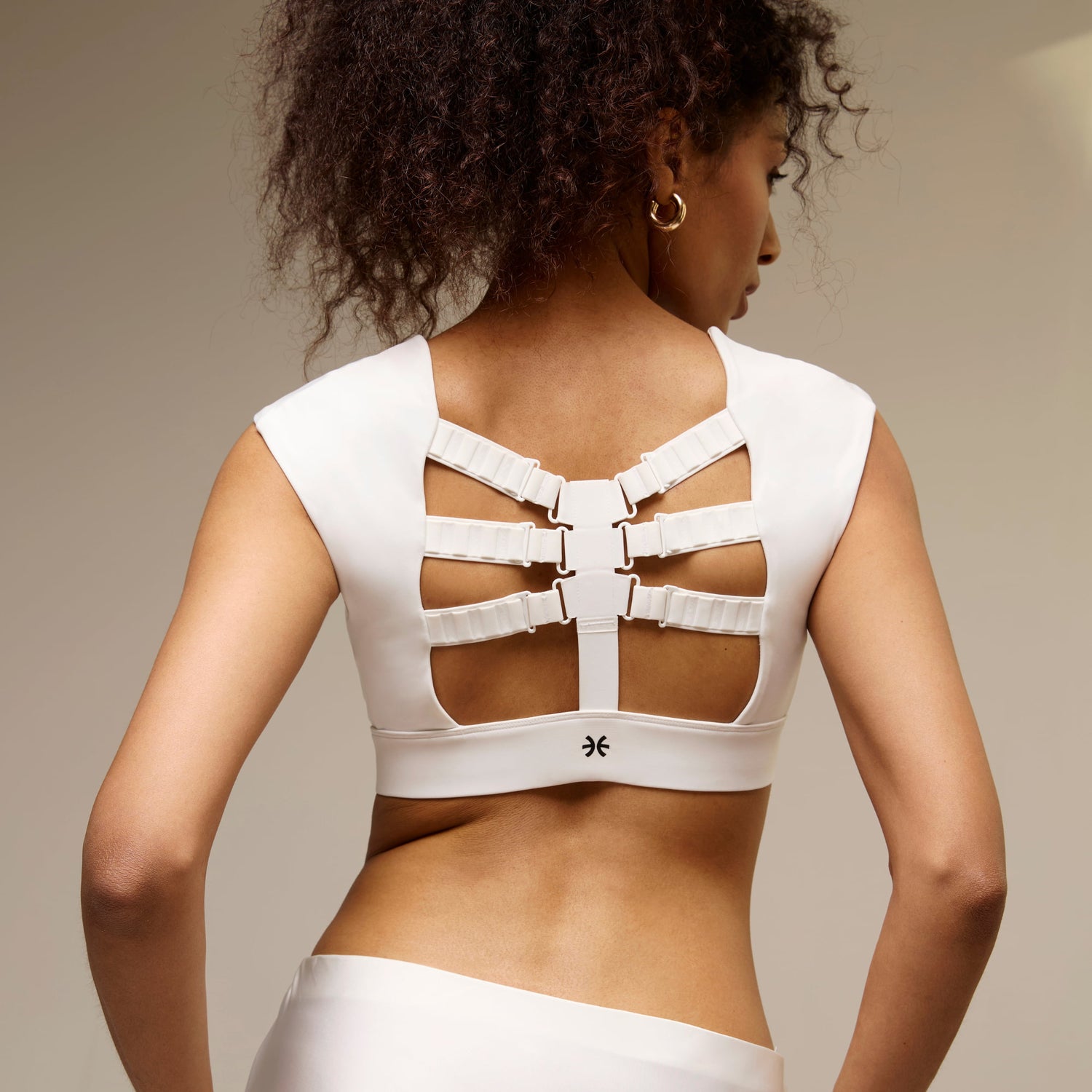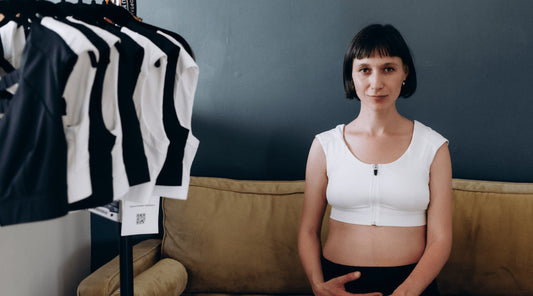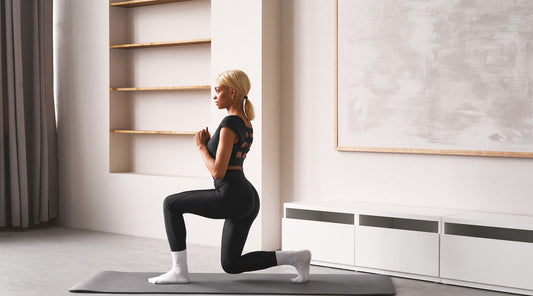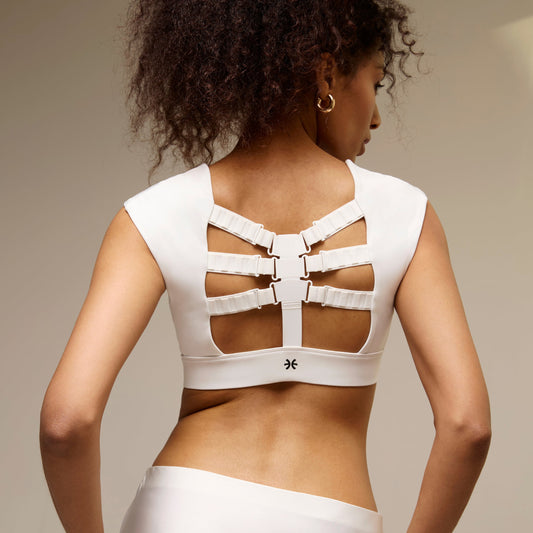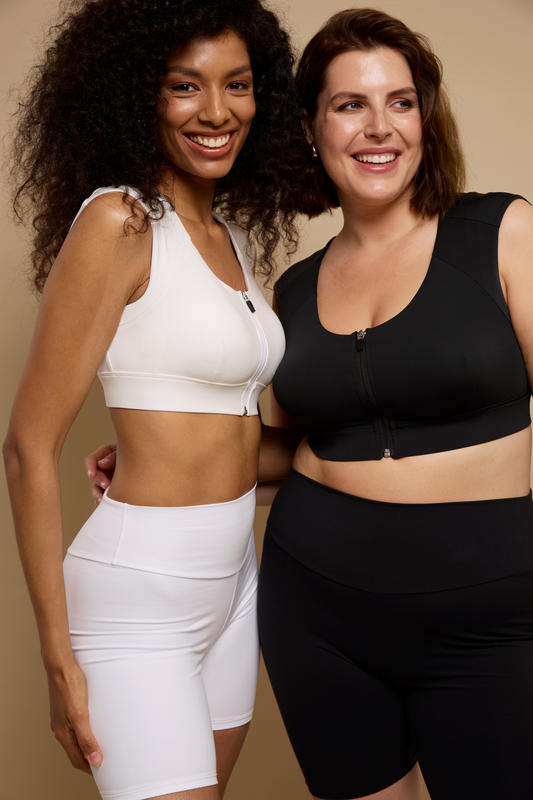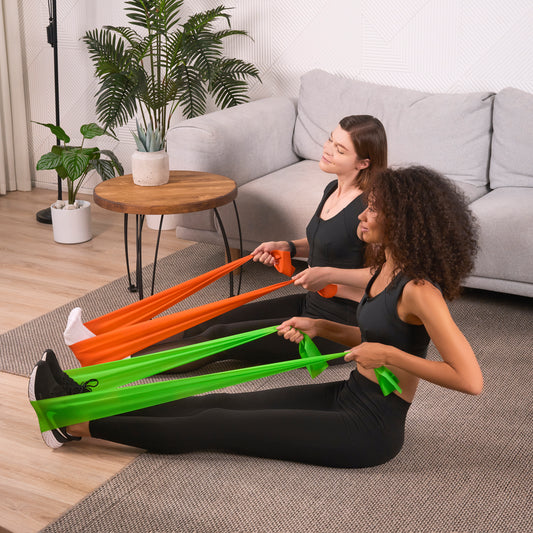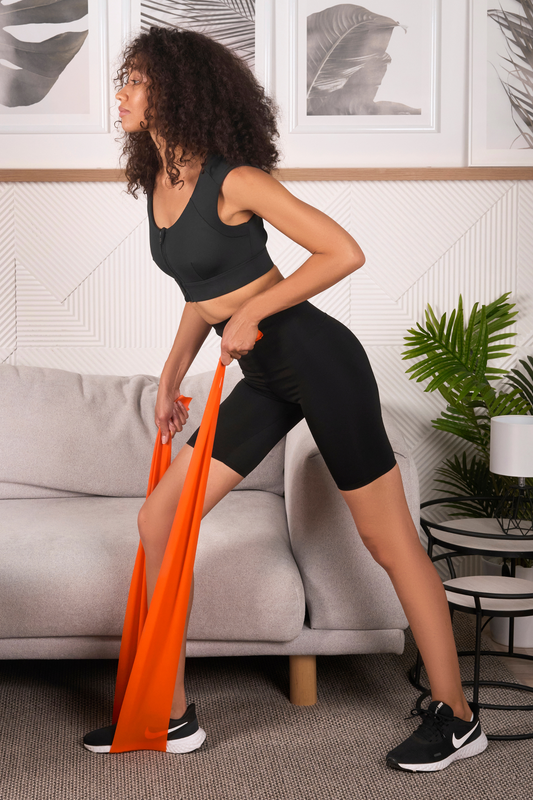Changing the ergonomic work environment to a home couch, spending more time staring at your devices, or having a newborn don’t serve well for our posture. As a consequence of regular slouching people notice back pain, muscle tension, appearance changes, digestion problems, and more. Posture correctors are aimed to resolve uncomfortable feelings and help to support good position. But there are many types of them on the market. How to pick what is right for you? In this article, we review the most popular types of posture correctors and provide guidance on how to make your choice.
When to consider a posture corrector?
When you have serious back pain issues or scoliosis, you might need to seek a medical professional's advice for a serious intervention. However, if you feel the first signs of discomfort or back pain, you might consider using a posture corrector to help you get back on track. Often it’s caused by:
- hunching over when reading or using a smartphone
- looking at a computer monitor that is not in front of your eyes
- sitting in an uncomfortable chair
- driving a car for a long time
- sleeping with an unsupportive mattress or pillow
- wearing high-heeled shoes
- carrying heavy bags
-
incorrectly standing for a prolonged time
Additionally, a posture corrector may be useful for:
- rehabilitation following an operation
- treating musculoskeletal conditions
- people with Parkinson’s disease
- improving occupational health and safety
Having a healthy posture helps to alleviate aches and pains. Other benefits include:
- reduced stress on joints and bones
- stronger core muscles
- easier breathing
- improve your mood and confidence
- better digestion
What is a posture corrector?
A posture corrector is a special device or apparel that tells your body what a healthy posture should be when you wear or use it. Posture correctors guide muscles into the right place to ensure that your back is straight and your shoulders are aligned. This alleviates the pain and discomfort of tight or overstretched muscles.
During the time when you wear a corrector, your body should become aware of what a healthy posture feels like and adopt it as a natural habit. There is a term “proprioception” that describes sensory feedback to a body in order to feel where it’s supposed to be. For example, touch your finger to your nose with your eyes closed, walk downstairs without looking at every step, or sit in a chair without looking under your rear end. After wearing a corrector you suppose to maintain a right posture without thinking about it intentionally. Sounds good, right?
What is a healthy posture?
If you have a healthy posture, your head should be aligned with your spine, and your shoulders should be relaxed, while your shoulder blades pulled back. When you are standing, your back, hips, and knees are in a neutral position with your body weight evenly distributed. For a straight posture when you are sitting on a chair, sit with your back straight and your bottom against the back of the chair. Try to bend your knees at a right angle, and keep both feet flat on the floor.
If you are reading a book or texting with your phone, look down with your eyes rather than bend your neck. But the reality is an estimated 80 percent of Americans will experience back pain at some time, and often poor posture — especially slouching while using smartphones and computers. As many beneficial habits in our routine like brushing our teeth or going to therapy, that we weren’t born with, cultivating a posture with a corrector could become your favorite wellness routine.
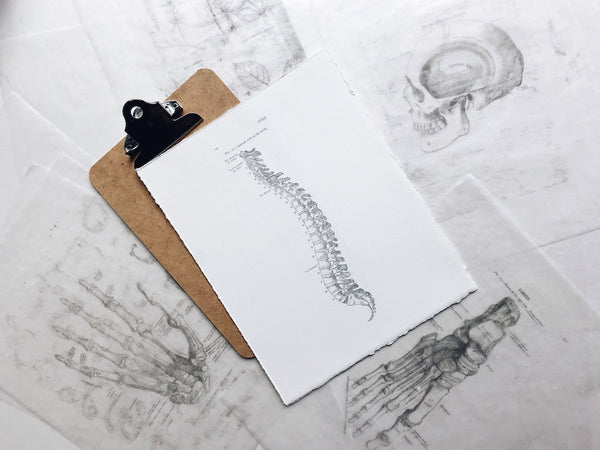
How posture correctors work
Over time, poor posture can create muscle imbalances. As you slouch, you are overstretching the muscles in the back of the shoulders and upper back while tightening the muscles in the front of the shoulders and chest. Posture correctors like the Etalon posture correcting bra work to address these muscle imbalances by gently pulling your shoulders back and opening your chest. Some posture correctors also help reduce strain in the lower back.
A posture corrector is like a training tool. When worn consistently — we recommend wearing it daily for at least three months to start — it helps you build muscle memory and improve your proprioception (your awareness of the position of your body) so that good posture starts to feel more natural.
Should you use a posture corrector?
A posture corrector can be a helpful device for just about anyone, especially if you can answer “yes” to any of the following questions:
- Do you have a job that requires you to sit or stand for extended periods of time?
- Do you experience neck, shoulder, or back pain on a regular basis?
- Do you catch yourself slouching while sitting, standing, or walking?
- Do you suffer from tension headaches?
- Do you struggle to keep good form while exercising?
- Do you often deal with digestive issues like acid reflux or indigestion?
If you’re experiencing any of the above, you may want to give a posture corrector a try. Just keep in mind that when picking a posture corrector, make sure you find one that fits your body (a customizable option is best), is comfortable, and targets your weakest areas.
How to get the greatest benefits out of a posture corrector
The most effective types of posture correctors are comfortable and customizable, like the Etalon posture correcting bra, which has adjustable straps that allow you to increase or decrease the support. A posture bra should not cause pain or chafing or restrict your movement.
A posture corrector won’t fix your posture in a day, and not even a week. Stay patient. The key is to wear it properly and on a daily basis — for up to six hours a day and for at least three months. Take breaks from it as well. You should gradually start to feel yourself sitting and standing up straight without any extra help.

How to choose a posture corrector that works for you
Between back braces, high-tech gadgets, tracking apps, and functional apparel, there are a number of posture correctors available. The right posture corrector for you depends on various factors like your body shape, comfort level, weak areas, and fashion preferences.
Start by taking a look at your posture, both when sitting and standing. Do you notice an arched back? You may want to find a posture corrector that offers lumbar support. Are your shoulders hunched? Does your head tend to jut forward? If so, you may want to choose a posture corrector that helps you keep your shoulders down and back.
Also, don’t forget to check the quality of the materials. The best posture correctors are made with breathable fabrics that won’t irritate your skin. And — maybe most importantly — choose one that makes you feel good! It’s a simple but effective concept: If you feel good in it, you’ll be more motivated to wear it.
Need some extra help deciding? Take the Etalon quiz to find out which posture correcting bra may suit your needs. We also recommend consulting a doctor to discuss what type of posture corrector may work best for you.
Do posture correctors really work?
Some experts believe that posture correctors are effective devices for changing posture. Posture correctors target muscle imbalances by guiding the body to use the right muscles for a healthier posture. Different posture correctors activate different areas of your body. The most common types help to correct posture in your shoulders, upper back, and lumbar spine.
Shoulder posture correctors help to pull the shoulders back and down. Lumbar supports prevent you from sitting with your back arched. Posture correctors are designed to address muscle imbalances that arise when we spend long periods of time in unhealthy, fixed positions. While the muscles in the front of the chest (pectorals) have a tendency to become tight, the muscles in the upper back, including the middle trap and rhomboids, are likely to become overstretched. Correctors can help activate the muscles that haven’t worked enough and give them a guide for where they need to be.
Types of posture correctors and how they work
There are many posture corrector types including shoulder braces, back belts, innovative posture garments, gimmicky gadgets, and apps. They aim to build healthy habits and reduce the discomfort of back muscles.
Braces
Wearing a brace helps get your muscles back on track by forcing them into the correct position and making you aware of how you're sitting.
Benefits: There is a variety of them on the market. They are cheap and easy to use.
Downsides: Braces are restrictive or bulky underneath your clothing. While a posture brace may help bring your shoulders back, it doesn't strengthen the muscles in the back of the neck or upper back. So, while it may help while it is on, when you take it off, your shoulders will likely go right back to their earlier rounded state.
Gadgets
Tech-enabled posture devices, like the Upright Go buzzes alerting you when you’re slumping or rounding your spine while sitting at a desk. They don’t force your back to maintain a position but help to increase body awareness and remind you about sitting right.
Benefits: A device has a sensor that monitors your progress. You don’t need to experience tension from a corrector.
Downsides: Many people found a vibrating gadget on their back annoying. Also, our minds are adjusting to outside stimuli very fast and stop to notice buzz. You can only use it while sitting at a desk and not when moving.
Tops and shirts
Functional apparel is trending now. Athletic brands offer supportive t-shirts and tops for a healthy posture during workouts. At Etalon we believe in a right posture as a part of a lifestyle (no more slouching photos near a buffet table, please), and develop the posture bra that you can wear everywhere. It focuses on eliminating the habit (and negative effects) of slouching, but gently pulling your shoulders back and moving your shoulder blades closer together.
Benefits: Integrated into everyday life. Look better than braces and is more supportive.
Downsides: It might be uncomfortable to wear or put on posture tops the first time.
Apps
There are apps that offer posture reminders, a set of exercises, and workouts that help to improve it. The Posture Pal App utilizes motion sensors in your AirPods to track if your neck is slouching or leaning to one side.
Benefits: Free or low cost, can start to use immediately.
Downsides: Requires self-discipline to practice, less effective since don’t affect your posture directly, and has an annoying vibrating signal.
How to choose a posture corrector?
The best way is to talk to your doctor and seek a professional orthopedist's advice to determine a right type of support for you. If you decide to make choice on your own, we can recommend following criteria:
- Area of focus: Does it target your weak areas? There are different posture correctors for different parts of your body. The most common are for your shoulders, your cervical thoracic junction (where your upper back meets your neck), and your lumbar spine. If you’re not sure where your weak areas lie, take a look at your posture from the waist up to pinpoint the origins of your slouch. Is your back arching too much? Try a corrector with lumbar support. Are your shoulders hunching or is your neck drifting forward? Consider one that helps keep your shoulders down and back. At Etalon we found that building good posture begins with our backs, but the effects are far-reaching. Posture is the alignment of the entire body, from the bottom of your feet to the crown of your head. That's why we target both shoulders and shoulder blades.
- Personalization levels: An adjustable corrector will provide optimal support without being too tight or too loose. You might need to change settings as you develop better posture to maintain tension. Some posture correcting bra like Etalon have adjustable straps or fastenings.
- Quality of materials and comfort: Since you will wear a corrector for a long time and every day, it should be made with breathable, skin-friendly materials. If it makes your skin irritated or restricts movements, unlikely you will wear it for a long time.
- Wearability: If you are really dedicated to improve your posture, a corrector should become a part of your daily routine. Pick a type that matches it the most: are you sitting at desk only or want to be able to move while wearing a corrector? Do you stay at home mostly and don’t care how it looks or do you want a pleasant aesthetic? If you don’t like the process of wearing a corrector, only an exceptional level of self-discipline can set you up for success.
- Sustainability and safety: if you make your purchases with eco-conscious mindset, check how and where a product is produced. Does it potentially has toxic materials, and what percent of its elements are biodegradable? For example, Each of Etalon bras is made from the equivalent of 10 plastic bottles. The fabric is 79% recycled polyester (rPET) and 21% spandex. The chemical composition has been modified so it is biodegradable and OEKO-TEX® certified. Our straps are also recycled, OEKO-TEX® certified.
Whatever corrector you end up choosing, it will help if you wear it consistently. Only regular practice can increase your posture awareness to ensure that you maintain a posture even if you take it off.
Summary
Posture correctors can help to encourage your muscles to naturally adopt a healthier posture when sitting or standing. Wearing a posture corrector for 20 minutes to a few hours during several months can help to encourage this. Different correctors are available on the market. Some focus on pulling back the shoulders, and others concentrate on straightening the back. They can be digital or wearable. Practicing good posture alongside wearing a posture corrector can further improve your posture. Making your workstation more ergonomic, improving the support you receive while sleeping, and maintaining a healthy weight and active lifestyle would help to maintain it going forward.
Photo by Joyce McCown on Unsplash
Photo by Thought Catalog on Unsplash
FAQs
How does a posture corrector work to improve posture?
Can a posture corrector work for long-term posture correction?
Does a posture corrector work for relieving back pain and tension?
Will a posture corrector work for everyone, or are there limitations?
How quickly can a posture corrector work to show results?
Trending
Try Etalon posture improvement products
